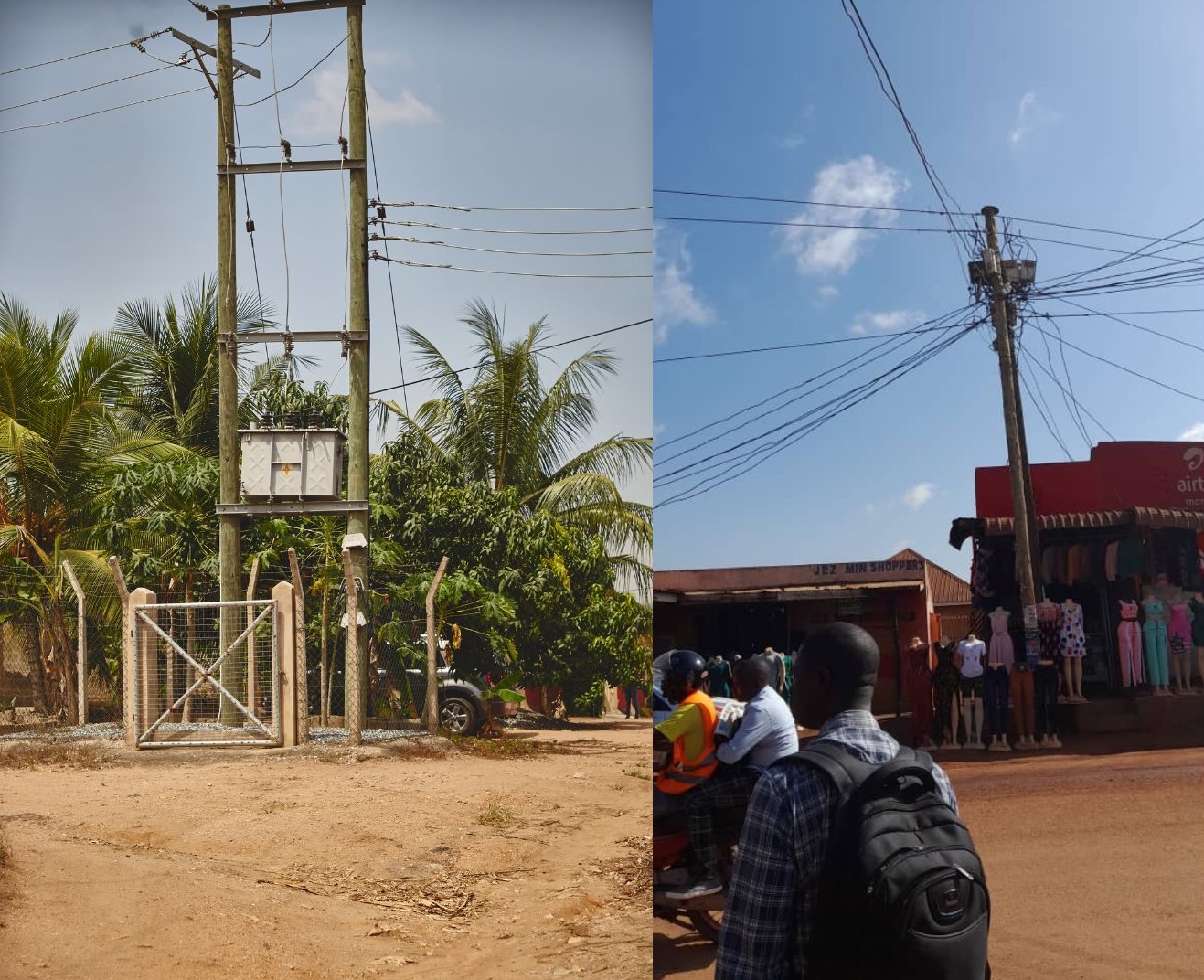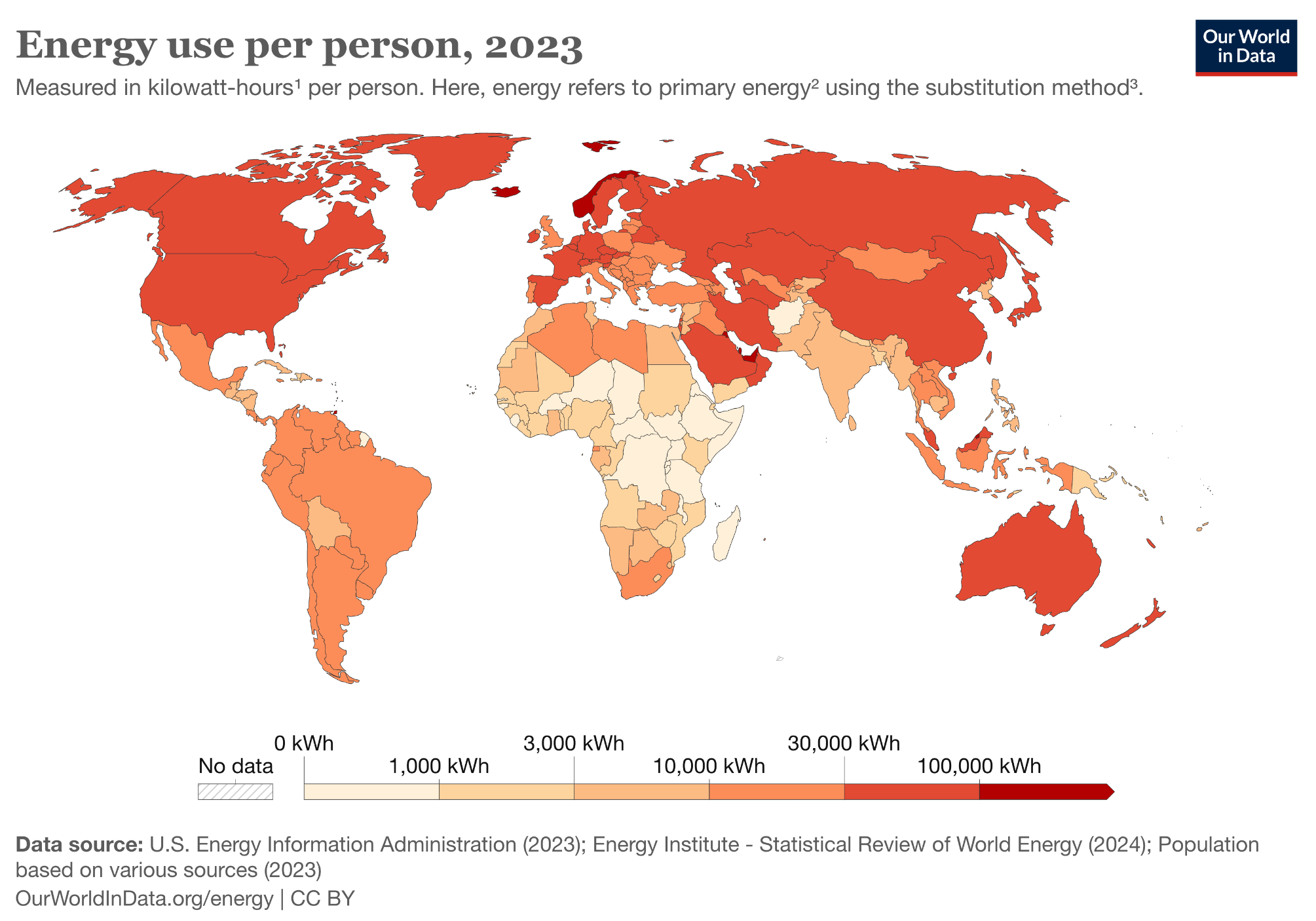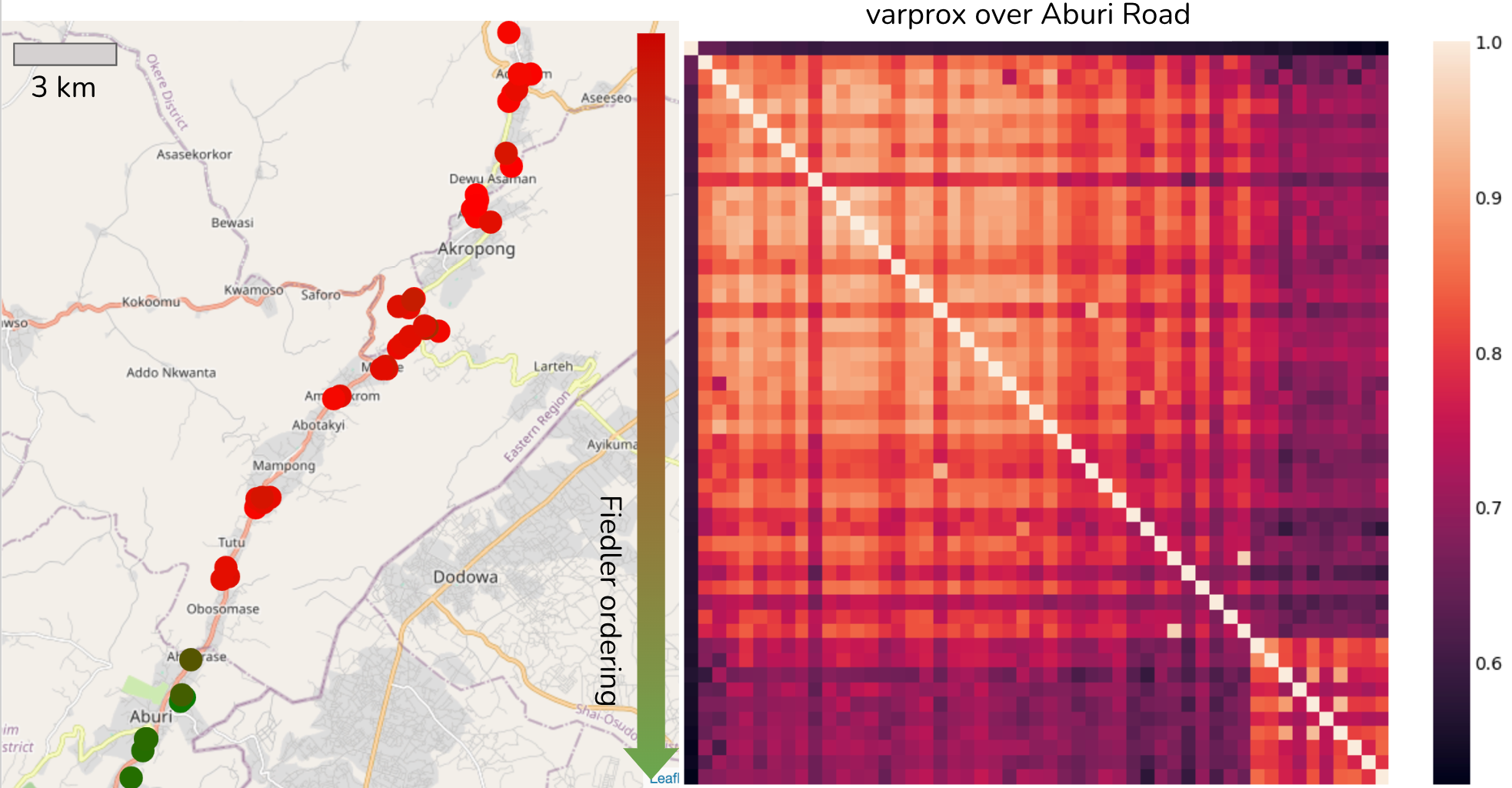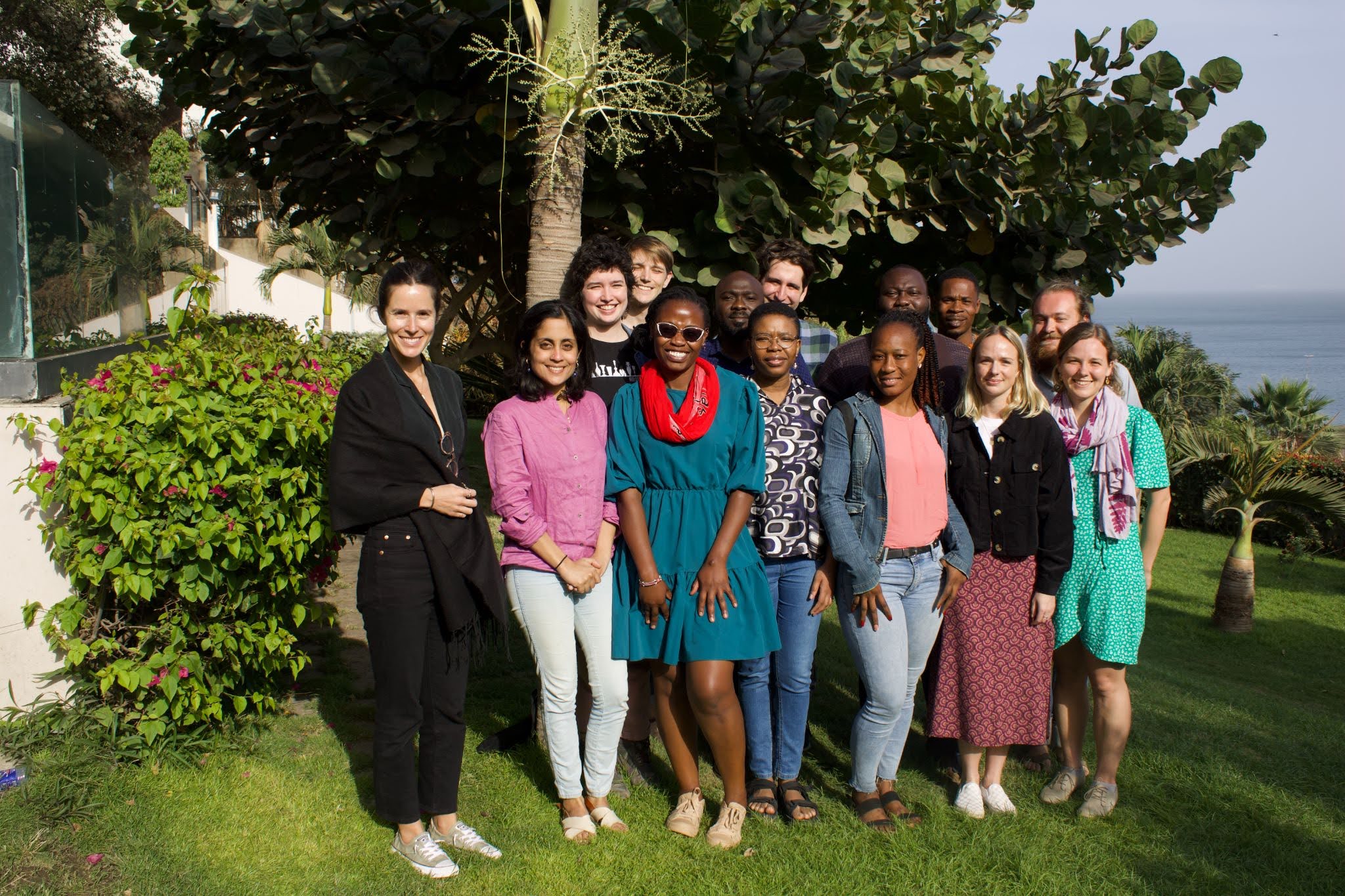Helping global grids work smarter, not harder
Bootstrapping smart grid insights for sustainable development in Ghana’s power sector, Climate Change AI Innovation Grants Program 2023

Electric grids are astonishing achievements of human ingenuity. When you casually plug your phone into a wall outlet, the electric power that flows to charge it has reached you through a vast and sprawling network of wires—some strung between towers, others buried; some fine, others thick and coiled—that connect you to many distant and diverse generators where energy from wind, sun, and fuel is transformed to electric power. This vast network, or electric grid, is legitimately described as the world’s largest machine: all of the grid’s seemingly disjoint elements are in fact intimately connected, operating in precise and carefully controlled unison. When you plug in your phone, each distant generator feels the minute increase in aggregate system load. In turbine-based generators (such as conventional fuel powered ones), this increase causes the turbine’s rotation to slow fractionally; when the turbine’s slowing exceeds some operator-defined limit, a control loop running in the generation plant increases the fuel supply to meet this new demand, speeding the turbine back up. As millions of us around the country and world power our devices, the unified pulse of generator turbines allows the grid to maintain a perfect balance of supply and demand, providing each of us with the perfect amount of electricity, rarely too little, rarely too much, to go about our day.
Despite the physical marvel of the synchronous grid, many of us are so accustomed to electrical grid infrastructure that we take it for granted. When did you last notice the wires that hung from your home, connecting it to nearby utility poles? Or take note of transmission lines cutting across the country while on a road trip? The electrical grid forms the backbone of our society, and yet we rarely acknowledge it except when it isn’t working as expected. While it might be nice to have your eyes subconsciously filter out the messy electrical lines in a sunset view, our society “not noticing” the grid has considerable detrimental implications in the current historic moment, when we are demanding more from our grids than ever before.
Today, electrical grids around the world are facing an unprecedented dual challenge. Climate change mitigation requires that we decarbonize energy production, thus fundamentally changing the sources and sinks of electricity carried by our grids and pushing them to support larger, more complex electricity flows. Simultaneously, we must combat global energy poverty: as United Nations Sustainable Development Goal 7 enshrines, providing access to “affordable, reliable, sustainable and modern energy for all” is fundamental to alleviating poverty and human suffering. Combating global energy poverty requires hundreds of millions of additional grid connections, pushing grids to operate closer to their limits and to reach more remote populations.

These twin challenges—decarbonization and ending energy poverty—are daunting everywhere in the world, but will fall most heavily on grids in low- and middle-income countries (LMICs) where decades of limited infrastructure investment have produced weak and inadequate grids. These weak grids are already being asked to operate beyond their limits; poor power quality and reliability (PQR) originating from weak or undersized grids affects an estimated 3.5 billion people in LMICs. In these same LMICs, electricity demand is set to grow swiftly, climate impacts are projected to be severe, and electrical utilities often lack the capacity and tools available to their counterparts in high-income countries (HICs) to strengthen their grids in the face of these challenges.
Smart grids are useful…and expensive
One critical tool often lacking on the grids of LMICs is smart-grid technology: sensors and control equipment deployed on the grid that can automatically monitor the grid’s state and take action to maintain grid stability.
In HICs, smart grid technology has been a critical enabler of the energy transition: decarbonized electricity generation from solar or wind technology leads to more volatile and unpredictable energy flows, and sophisticated monitoring and control can ensure that this electricity reaches customers seamlessly, with no gaps, and at stable levels that do not damage grid equipment or consumer appliances.
However, conventional smart-grid technology is costly, slow to deploy, and can be difficult to use. Existing state-of-the-art sensing technologies can cost from $40,000 to $300,000 USD [1], [2] per deployed device; smart-meter rollouts in the EU cost €40B [3]. Additionally, transforming smart-grid data into actionable insights demands technical capacity that is absent for many utilities and regulators in LMICs. It is unclear whether traditional smart-grid technologies will be a viable solution in LMICs on the timescales required to realize the global energy transition and support climate change mitigation and resilience.
The GridWatch Dataset in Accra, Ghana
It is deeply unjust to demand that LMIC utilities accomplish the unprecedented—raise growing populations from energy poverty while transitioning to clean energy with minimal resources—without substantial global support in developing the technological, social, and structural innovations needed to do so. However, most technology development and research for smart grids today is done within HICs contexts. Through the grant award of CCAI’s 2023 Innovation Grants Program, we hope to lay a foundation for more smart grid development to be contextualized within the needs and constraints of LMICs.
We are building this foundation with three pillars:
-
GridWatch: An alternative smart-grid sensor. Through the CCAI Innovation Grant, we built a partnership between power and energy systems professor June Lukuyu at the University of Washington and nLine a small social enterprise that develops and builds low-cost smart grid technologies designed specifically for LMIC contexts. nLine’s GridWatch sensor plugs into a standard outlet and collects data about power reliability and quality. These data can be used to detect failing equipment, restore outages more quickly, diagnose systemic challenges in the grid, and understand the human experience of electricity. Sensors report data over the cellular network using a universal SIM, store it locally in times of poor network quality, and include a battery so they are ready to collect data even after long outages. This sensor is 1/100th of the operational cost of alternative smart grid sensors, and because it plugs directly into a wall outlet, it can be deployed and maintained directly by a non-electrical expert to provide rapid, robust insights.
-
Open-sourced data from 1,300 grid sensors in Accra Ghana. nLine deployed 1,300+ GridWatch sensors in Accra, Ghana over 4 years, in a project funded by the Millenium Challenge Corporation and the Government of Ghana. As part of the CCAI Innovation Grant, we are thrilled to release this dataset publicly via a custom-built dashboard that allows easy visualization, access, and download. The Accra Power dataset represents the first, large-scale longitudinal study of ground-truth power quality and reliability on the electrical grid in a LMIC. It provides a rich foundation upon which to develop and prototype smart grid solutions. Voltage data and grid frequency are collected every 2 minutes; these raw data are used to detect outages and compute grid key performance indicators, such as SAIDI, SAIFI, and hours undervoltage. Both raw data and KPI values are available as part of the open-sourced Accra Power dataset. We are excited to bring this dataset to the community of energy systems researchers and practitioners; please reach out to info@nline.io if you have any questions about the dataset.
-
Machine-learning-based smart-grid use cases. To make grid data valuable to capacity-constrained utilities, we are building out a set of canonical smart-grid use cases, which demonstrate how smart-grid data can be used to help utilities reduce outage duration and technical loss in their network. As part of the CCAI Innovation Grant, we are developing an ML-based topology reconstruction algorithm to support these smart-grid use cases.

A call to help global grids work smarter, not harder
Electric grids are the conduits through which the majority of clean, modern energy will be transmitted, and grids will play a central role in addressing the linked challenges of climate mitigation, adaptation, and resilience. To enable this critical public infrastructure to rise to the new and unique challenges of our time, we must invest in grids around the world, and especially in LMICs, which are being asked to abate and face the climate impacts they did little to cause without adequate assistance. Without novel approaches to making grids smarter, LMIC grids may remain too weak to meet climate challenges. This will compromise climate mitigation and adaptation strategies (many of which depend on good electricity supply), leaving vulnerable populations even more exposed to the impacts of climate change. Leveraging the tools and datasets developed in this project, we hope to see a new generation of smart-grid algorithms that are more accessible, lower cost, and designed for LMIC contexts.
If you are a researcher developing smart grid algorithms, an electricity provider, a donor funding electrification projects, or otherwise involved in this field, we invite you to share your suggestions and feedback on how the Accra Power dataset could support your work. We are also keen to hear your ideas on how we can enhance our datasets and algorithms to better enable smart-grid applications in LMIC contexts.

The Climate Change AI Innovation Grants Program 2023 is supported by Quadrature Climate Foundation, Google DeepMind, Global Methane Hub, and the Canada Hub of Future Earth.


